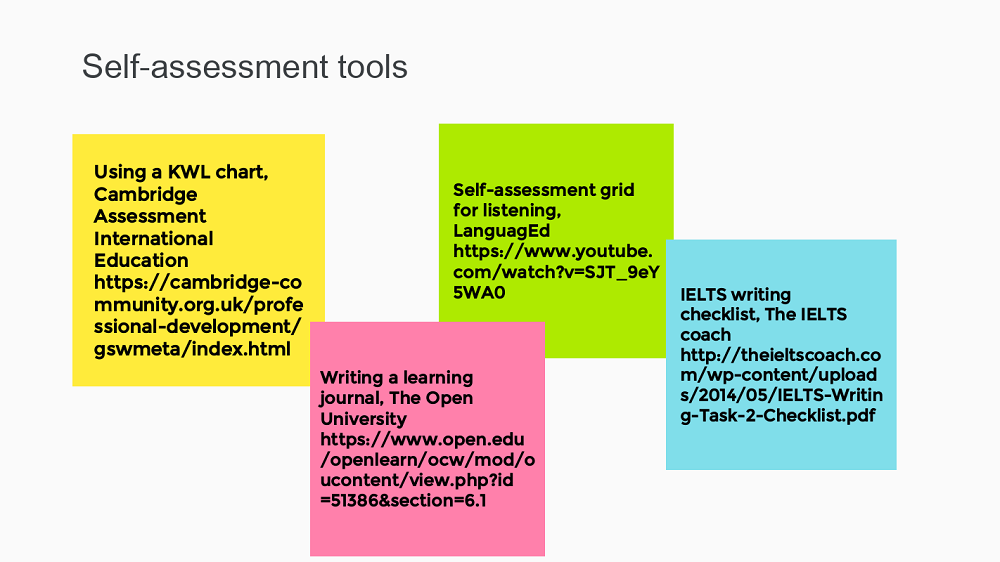The bright side of moving assessment online
With entire countries switching to live online learning (or a hybrid combination of face-to-face and remote learning), one question that might have been overlooked at the beginning of the emergency seems worth answering now: what about assessment? We know that teachers are being impacted by Covid-19, in terms of their livelihood and teaching practices but the question of how to reimagine assessment is one that needs addressing as well in my opinion.
Based on recent data from school and university educators (Del Bono, 2020), assessment is in fact one of the areas with which language teachers have struggled. Reported difficulties include assessing oral production and interaction, the additional time needed to build online assessment tools and a reduction in the opportunities for peer assessment. On the other hand, however, this situation has helped develop a series of new opportunities and tools to assess students. In this post, we’ll have a look at four of what I think are among the most exciting innovations in language assessment at the moment: gamified tests, ePortfolios, negotiated assessment criteria and self-assessment.

1. Gamified tests
Remote learning forces us to move our assessment online. Since we have to structure our tests online anyway, for example via tools like Socrative, why not make them into games? Turning tests into games, via Quizlet or Kahoot, or introducing language games like Scrabble or Influent, can help decrease the students’ levels of test anxiety and create diversified, engaging tests. We can also introduce an element of competition among students and if they have to work as teams, this may contribute to making them feel some connection to their peers, which is so difficult to achieve at the moment.
2. ePortfolios
Another promising assessment tool that I think is here to stay is ePortfolios. Students create a portfolio of work they have done and that is what they are assessed on. This can take the form of a collection portfolio, including all the work a student has done in a course; an assessment portfolio, in which the student includes only work that they are required to do based on the educator’s instructions; or a showcase portfolio, in which students can select only their best work. Whatever form you choose, students can easily create an ePortfolio on a shared online folder. It can include videos, audio recordings, infographics, PowerPoint presentations, transcripts of chats they had with peers, blogs – you name it. ePortfolios offer a wider and more representative sample of what learners can do than a simple closed-ended test. They also let students express themselves more personally and creatively and they allow learners the time to review and reflect on their work.

3. Negotiated assessment criteria
There is research evidence that students struggle to understand what criteria we use when marking their work, especially when we deal with more subjectively marked work (e.g. writing or speaking). One strategy to tackle this, which is especially useful now that the forced distance creates more chances for misunderstandings, is negotiating assessment criteria with learners. Language Teaching Research (2020) shows that negotiating assessment criteria with learners enhances their autonomy, contributes to addressing the power imbalance between learners and the teacher in the classroom and helps fill the gap between what learners and teachers believe to be ‘good standard’. Thanks to the possibilities offered by technology, we can now work on establishing assessment criteria with our students by circulating surveys, initiating discussion boards or eliciting their ideas through tools like Padlet, which may be less intimidating than having to explain one’s ideas (and possibly contradicting the teacher!) in front of the whole class.
4. Self-assessment
In self-assessment, ‘learners simultaneously create and undergo the evaluation procedure, judging their achievement in relation to themselves against their own personal criteria, in accordance with their own objectives and learning expectations’ (Henner-Stanchina and Holec, 1985). With the shift to remote learning, many activities have had to move to the asynchronous dimension, with learners having to do a lot of work by themselves. This might then be an ideal time for learners to also develop their self-assessment skills and make them part of their learning on a more permanent basis. This will in turn help them develop their metacognitive awareness and a sense of control over their learning and progress. While tests and teacher feedback can be helpful with productive skills, self-assessment can be especially valuable with less observable skills, like listening, in which self-assessment grids or learning journals can lead learners to better understand what they are doing and how they can improve. You can also look at these resources for self-assessment that I have collected for you.

So how are you organising your assessment this academic year? Let us know in the comments!
References
Del Bono, F. (2020). Assessing languages in DAD: tools, activities and general considerations. Paper presented at ‘Teaching/learning languages at a distance – Open day online’, Action Research Group on Language Learning, Italy.
Henner-Stanchina, C. and Holec, H. (1985). ‘Evaluation in an autonomous learning scheme.’ Melanges Pedagogiques, 73-84. CRAPEL, University of Nancy. Reprinted in Riley, P. (ed.). (1985). Discourse and Learning. New York: Longman.
Zhao, H. and Zhao, B. (2020). ‘Co-constructing the assessment criteria for EFL writing by instructors and students: A participative approach to constructively aligning the CEFR, curricula, teaching and learning.’ Language Teaching Research, 1-29.

Comments
Write a Comment
Comment Submitted